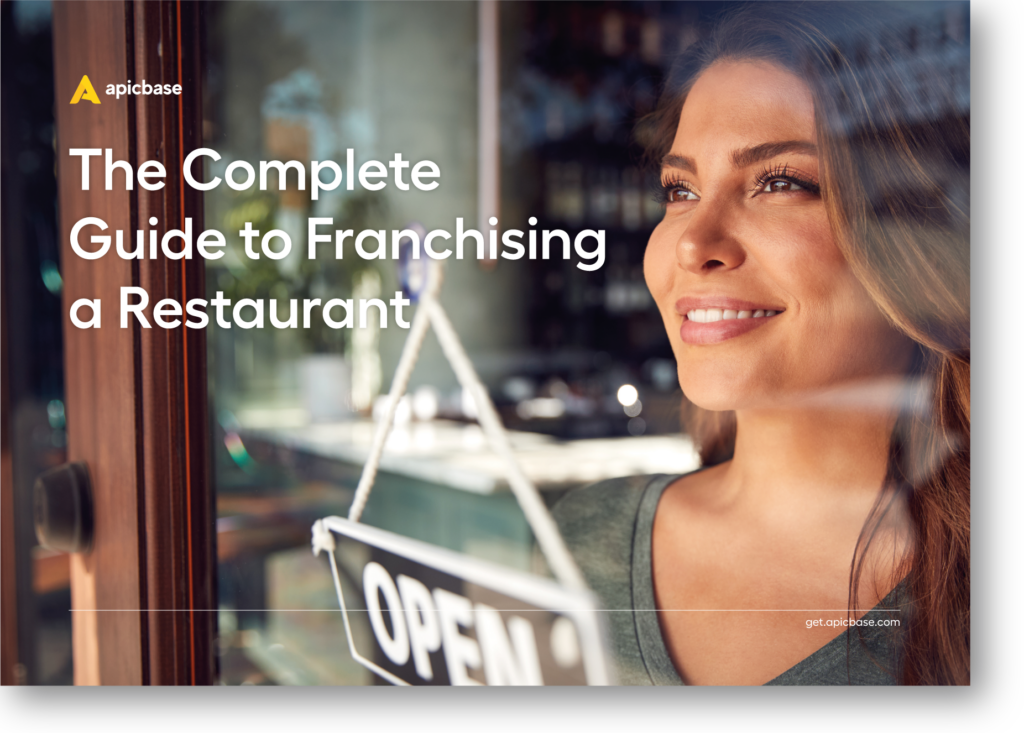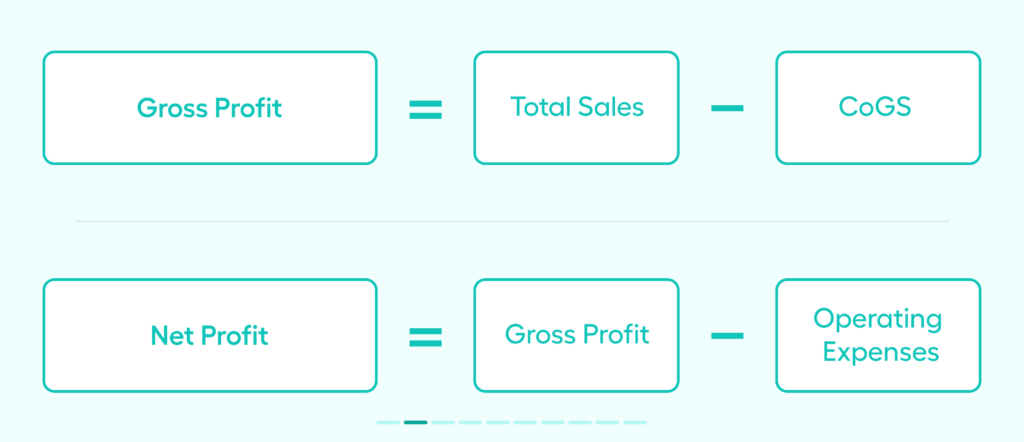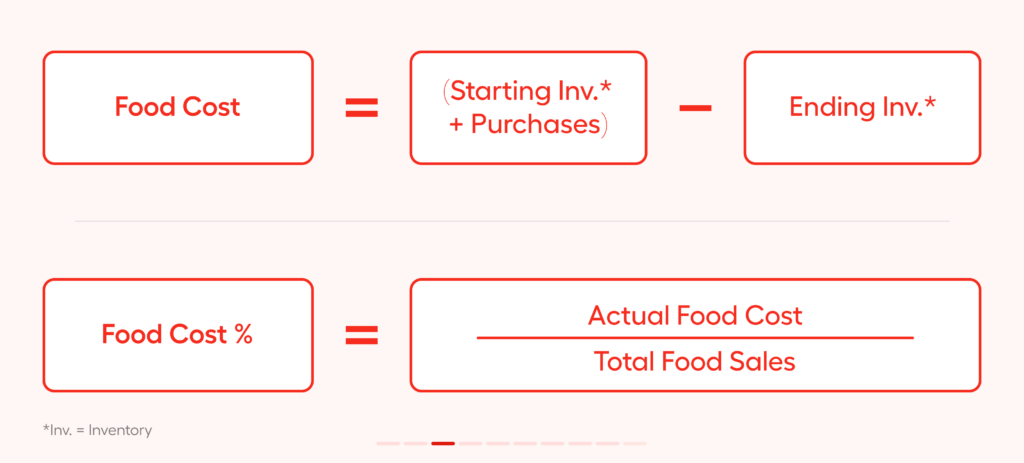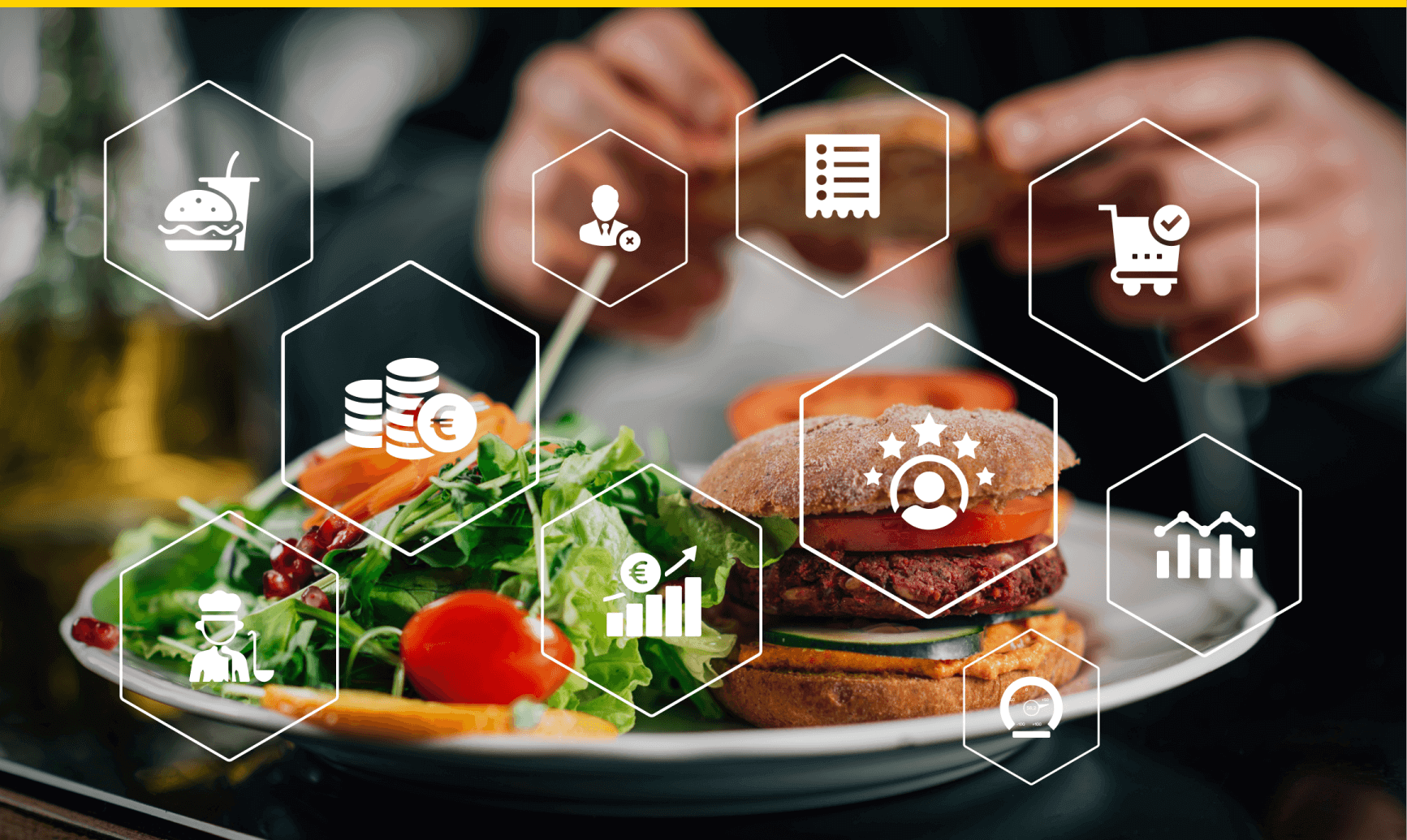It’s a giant leap from running a handful of locations in-house to franchising your restaurant.
It’s easy to lose control. Monitoring restaurant performance metrics puts you back in command. And control is what you need to ensure group-wide consistency and profitability.
This article lists ten crucial restaurant franchise metrics. With these, you can help your business partners continue to meet the all-important benchmarks for profitability, quality and consistency time and again.
But strong partnerships come first. So…
Build Relationships With Franchisees Based On Trust and Clarity
Owning a franchise means collaborating with multiple independent business owners. For the whole group to flourish, you need to make sure everyone is on the same page from day one.
Metrics help you find common ground with your restaurant franchisees.
Setting benchmarks has the advantage of clarity. Even though they differ from site to site, your partners understand what they need to do and what the objectives are.
If standards decline in a particular restaurant, you have the data to back you up. It avoids tedious discussions. More importantly, you’ll notice a deterioration long before it starts harming your brand.
10 Key Metrics Restaurant Franchises Should Focus On And How To Improve Them
To develop a food franchise built to last, you must ensure that franchise outlets perform well. That means they have to follow the brand guidelines and operational manuals correctly.
These key performance metrics provide a detailed picture of the performance of each restaurant in your franchise, and of the group as a whole:

- Restaurant revenue
- Profitability
- Food cost
- Labour cost
- Average ticket size
- Franchisee turnover
- Net Promoter Score (NPS)
- Customer Retention Rate (CRR)
- RevPASH (Revenue Per Available Seat Per Hour)
- Online order percentage
Before we dive into the specifics of each franchise metric, grab the playbook for restaurant franchises below. It’s packed with best practices and examples👇

How To Franchise A Restaurant?
Develop your franchise using a proven roadmap for franchisors.
✅ Free download
1. Restaurant Revenue
The first metric is hardly surprising – revenue is the primary measurement of any business.
What is revenue?
Revenue describes the total amount of money a restaurant generates over a period of time. This number reflects the unit’s total food, beverage, and merchandise sales through all the different revenue streams.
Why should you care?
Franchisors use monthly revenue to calculate royalty fees for franchisees, making it a metric that matters a great deal. However, there are many things a restaurant’s total income cannot tell you, like where its sales are coming from or how much profit it is making. That’s why you need other KPIs to add context.
How to calculate revenue

Your total revenue is the sum of all your sales tickets within a specific timeframe. It includes in-house and off-premises sales across all your channels.
How can you improve the revenue?
If you see that one of your franchise outlets is struggling to bring in sales, there are several actions you can take:
- Work on improving your menu.
- Offer promotions and special deals.
- Create an upselling program.
- Boost your table turnover rate by training staff to improve service.
- Partner with delivery and online ordering services.
- Adjust your pricing.
- Double down on offline and online marketing.
2. Profitability
A number that will tell you much more than a restaurant’s total revenue is its profitability.
What is profitability?
Profitability is a restaurant’s ability to generate revenue in excess of its expenses.
Why should you care?
When you look at your restaurant’s profit margins, there are two numbers you’ll need to know and track: gross and net profit.
Your restaurant’s gross profit margin lets you know how much capital you have left to pay overhead expenses for a specific period. Net profit, on the other hand, shows your actual profit after accounting for your costs. That’s why net profit demonstrates the success of your business.
This metric will therefore affect all your business decisions. It’s also the factor that tells you how successful each unit is.
How to calculate gross and net profit

Your gross profit equals your total sales income minus the CoGS.
Your net profit is the amount left from your gross profit after deducting all your operating expenses (like labour, utilities, rent, and other overhead expenses).
How can you improve your profitability?
Most restaurants aim for a gross profit margin of roughly 70%, while net profit margins can range anywhere from 2 to 15%. The key to boosting your profit is increasing sales and lowering your overhead expenses and CoGS.
Unlike overhead and sales, you are in control of the CoGS.
What we mean is, you can’t halve your rent, and you can’t force anyone to buy from you. What you can do is train your staff to implement strong Standard Operation Practices, follow up on their execution, and measure the effects on food costs using the Apicbase modules.
3. Food cost
Food cost is a metric every (franchise) restaurant should diligently track.
What is food cost?
Food cost is what it costs in materials to produce the items on your menu. It is usually expressed as a percentage of sales for a given period, known as the food cost percentage.
Why should you care?
Keeping your food cost in check can significantly impact your bottom line. So if one of your restaurants isn’t performing well in this area, your profits will reflect that.
To assess a unit’s profitability, you must account for the cost of the items it sold in the period you’re measuring.
How to calculate food cost

To calculate your actual food cost, add the value of your starting inventory and your purchases, and then subtract the value of your ending inventory from the total. To find your food cost percentage, divide your actual food cost into your total food sales.
If you want to read more about food cost calculation, check out our guide on calculating food cost: formulas for chefs and F&B managers.
How can you lower your food cost?
A safe food cost percentage to aim for is 30%. If you notice that one of your franchises has a much higher food cost, you need to reduce that percentage without compromising quality.
Common tactics to do so include:
- portion control;
- using tech to keep tabs on inventory;
- keeping your menus focused;
- changing vendors (or negotiating better prices);
- reducing shrinkage and wastage.
You can find more tips to control food costs in our 9 ways to reduce food cost post.
4. Labour cost
What is labour cost?
Your restaurant’s labour cost is the total amount of money you spend on paying your staff. This number includes wages and salaries, healthcare, taxes, and benefits.
Why should you care?
Next to food cost, labour cost accounts for most expenses in any restaurant. That’s why it is such an important franchise metric, controlling your labour costs is necessary to maintain your profit margin.
In a franchise, salaries and wages can differ significantly between locations. And some of the independent restaurant owners in your franchise network might be paying themselves a salary, while others may (also) take a dividend from net profits.
Therefore, you must keep an eye on the labour costs of each unit separately to check if any locations need to make improvements. Every restaurant should reduce and optimise its labour costs to benefit the overall franchise.
How to calculate labour cost

Labour cost is typically expressed as a percentage. To calculate your restaurant’s labour cost percentage for a given period, divide your labour cost by your gross sales during that period. A healthy labour cost percentage sits between 20 and 30% of the gross sales.
How can you reduce your labour costs?
One effective way of cutting down labour costs is by investing in technology. For example, restaurant management platforms can significantly reduce human effort by automating BOH and FOH flows, thereby helping you to keep the labour cost in check.
Scheduling errors can also account for high labour costs. If you see a significant difference in labour cost in one of your units, offering assistance with employee scheduling and production planning can make a difference.
5. Average ticket size
Every restaurant should know and care about its average ticket size.
What is average ticket size?
Your average ticket size is the average amount of money customers spend in your restaurant – across all your offline and online sales channels.
Why should you care?
Over time, the average ticket size of all franchise units should grow gradually. It’s an easy metric to track progress and identify underperforming franchise restaurants needing a little help to increase revenue.
It works both ways. Listing the average ticket size of your franchisees makes it easy to spot restaurants that are doing significantly better than others. It enables you to study their approach and turn it into a best practice for your network of franchisees.
How to calculate average ticket size

Your average ticket size is the total amount of money customers spend in your restaurant divided by the number of tickets or covers in a given time frame.
How can you increase your average ticket size?
Overall, your teams should focus on upselling and upserving – elevating the guest experience across different sales channels – to boost average ticket sizes.
You could also look into adding more menu modifiers, like sauces, toppings, and sides to your offering.
A little, a little less – no matter what tactic you use, you have to make sure it doesn’t hamper the profitability of the menu items. With menu engineering software you can dynamically adjust recipes and menus, and see what the impact is on your margins.
6. Franchisee turnover
What is franchisee turnover?
Franchisee turnover refers to the total number of franchisees who leave within a specific timeframe. It includes franchisees who exit voluntarily and those who are fired.
Why should you care?
As your business partners, franchisees are highly committed to your brand. So measuring the franchisee turnover rate can show if your franchise strategy, concept, and support program are working.
This metric can also help you convince potential entrepreneurs showing interest in your franchise.
How to calculate franchisee turnover

To calculate your franchisee turnover rate, divide the number of franchisees who left the company (voluntarily and involuntarily) by the total number of franchisees.
How can you reduce franchisee turnover?
Having an employee retention strategy and constantly working on enhancing your relationship with franchisees is key to improving franchisee turnover.
7. Net Promoter Score (NPS)
What is NPS?
The Net Promoter Score or NPS measures how likely your customers will recommend your brand to others. Based on their answer, customers are ranked as promoters, passives, or detractors.
Why should you care?
This survey indicates the percentage of loyal customers your restaurant franchise can count on, giving you insight into your business’s popularity (and performance).
Measuring the NPS is crucial to gauge customers’ engagement with your brand, but you can also use it for your franchisees by asking them how likely they are to recommend your franchisee to other investors. Their scores will tell you how you, as a franchisor, are doing.
How to calculate your NPS

To calculate your Net Promoter Score, subtract the percentage of detractors (respondents who scored your brand between zero and six out of ten) from the percentage of Promoters (respondents who scored your brand between eight and ten).
How can you improve your Net Promoter Score?
The higher your NPS, the better your F&B franchise is performing.
To increase your customers’ scores, you need to improve the customer experience by providing excellent service and offering the right menu and prices.
To increase your franchisees’ NPS, you need to give them the support and resources they need to run their restaurant and provide them with a quality training program and supporting network.
8. Customer Retention Rate (CRR)
What is the customer retention rate?
Customer Retention Rate or CRR is a method to measure your customers’ loyalty. This indicator lets you know how many existing customers remain loyal within a specific time frame.
The metric specifies the percentage of customers willing to visit your restaurant more than once.
Why should you care?
Customer loyalty is one of the cornerstones of a successful franchise. Your Customer Retention Rate describes how your consumers feel towards your brand, so it is a KPI you should definitely track.
How to calculate your CRR

To determine your CRR within a time frame, subtract the number of customers acquired over that period from the number of customers at the end of the period. Then divide the result by the number of customers at the start of the period.
When measuring the CRR of your restaurants, keep in mind that it is almost impossible to compare them to each other. The CRR will vary significantly based on the restaurant’s location.
For instance, a McDonald’s at the airport or along the highway will undoubtedly have a low CRR because its customer base is in transition. So it wouldn’t be fair to compare its CRR to that of a McDonald’s in a residential area with a lot of (regular) footfall.
How can you improve your CRR?
To boost customer loyalty, make extraordinary customer service a top priority. In addition, you can look into a loyalty program. But the most effective strategy of all is to provide excellent value for money.
Recommended reading: 11 Restaurant KPIs To Scale With Confidence And Keep New Locations On Track
9. RevPASH (Revenue Per Available Seat Per Hour)
What is RevPASH?
RevPASH allows restaurants to measure how each seat performs over a given period of time.
Why should you care?
RevPASH is one of the most accurate success indicators in the restaurant industry because it considers the “Holy Trinity” of timing, capacity, and revenue, allowing franchisors to evaluate franchisees’ performance during peak and off-peak times.
Let’s zoom in on that. The RevPASH metric is one you should be watching hour by hour because not all hours will produce the same profit. For example, a restaurant’s RevPASH will be lower at 3 PM than at lunch or dinner time.
How to calculate RevPASH

Divide your restaurant’s total revenue for a given period by the available seat hours in that same period. Seating hours are the number of available seats multiplied by the number of hours in the chosen period.
How can you improve your RevPASH?
If one of your franchise locations frequently has many empty seats during busy times, it indicates this restaurant is likely struggling with its profitability. Some improvements you can make to increase the RevPASH include switching up table configuration, optimising operations, and menu engineering.
10. Online order percentage
What is the online order percentage?
Your restaurant’s online order percentage expresses the ratio of online orders compared to in-house sales.
Why should you care?
Offering food delivery and takeaway provides an additional revenue stream for your restaurants.
Online ordering answers modern consumers’ needs for convenience and speed, but it can also help restaurants bring in new customers, increase ticket sizes, and maximise kitchen capacity during slow times.
Measuring the percentage of online orders for each unit within your franchise can help you define growth opportunities.
How to calculate your online order percentage

To find your online order percentage, divide your online order sales by your restaurant’s total sales over a given period.
How can you improve your online order percentage?
Working with a third-party delivery provider is an excellent strategy for expanding your restaurant’s online reach and getting more online orders. In addition, teaming with multiple delivery services will further amplify your reach.
Additionally, you should streamline your online order flow to ramp up delivery times, food prep, and courier wait times. Improving these metrics will help your franchise restaurants improve their ranking on delivery platforms.
Automate Monitoring Of Metrics In Your Restaurant Franchise
Ready to rock the world of restaurant franchising? Apicbase’s complete F&B management platform will fortify your tech ecosystem, help you crunch the numbers, and keep track of franchisee performance.
Our solution offers 10 powerful modules that will help:
- boost product consistency,
- cut food costs,
- streamline logistics, and
- comply with food traceability regulations.
In addition, the platform provides valuable insights into each franchise unit and your entire operation’s performance.
See Apicbase In Action
Apicbase is the backbone of large franchise restaurants. You spend less time monitoring processes and get more time building strong partnerships.


